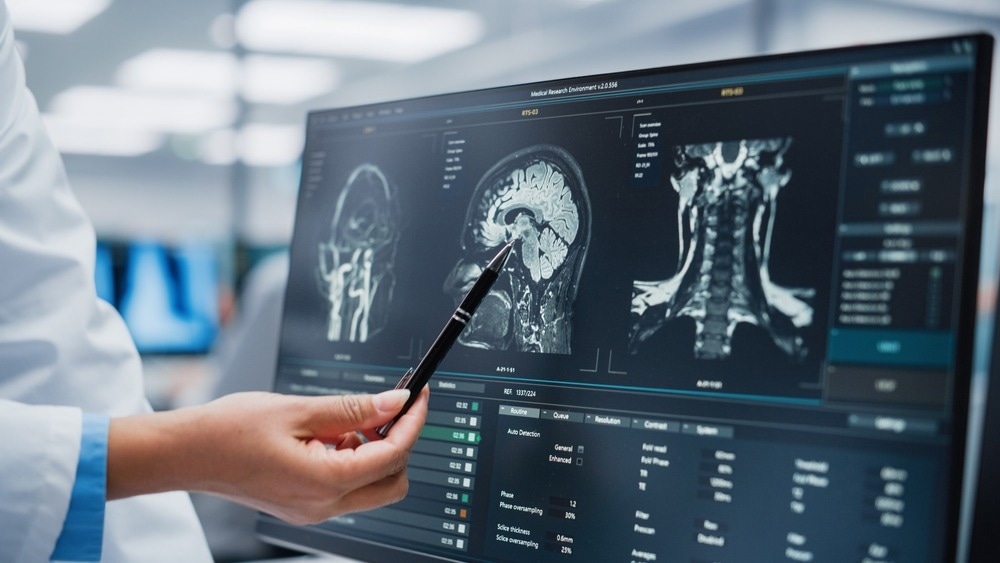To date, the coronavirus disease 2019 (COVID-19), which arises due to infection with the severe acute respiratory syndrome coronavirus 2 (SARS-CoV-2), has claimed more than 6.5 million lives worldwide. Most individuals infected with SARS-CoV-2 remain asymptomatic or experience mild to moderate symptoms; however, some individuals suffer severe symptoms that necessitate hospitalization.

Study: Chronic neuropsychiatric sequelae of SARS-CoV-2: Protocol and methods from the Alzheimer's Association Global Consortium. Image Credit: Gorodenkoff / Shutterstock.com
Background
In addition to the lungs, COVID-19 also affects the central nervous system (CNS) through anoxic, viral neurotoxicity, inflammation, and cerebrovascular mechanisms. As a result, about one-third of COVID-19 patients develop different neurologic problems, such as seizures, loss of sense of smell or taste, and stroke.
The risk of developing neuropsychiatric or cognitive complications appears to be independent of the initial severe pulmonary illness caused by COVID-19. However, a recent Translational Research and Clinical Interventions study formulated a method to identify the molecular and systemic factors linking COVID-19 to short- and long-term neurologic illness.
About the study
The authors reviewed existing literature in the current study and highlighted the documented links between SARS-CoV-2 infection, the brain, neurological symptoms, Alzheimer's Disease (AD), and related dementias (ADRD). The risk factors and possible viral, inflammatory, and molecular pathways associated with COVID-19 were also discussed.
The current study provided a better understanding of the Alzheimer's Association Consortium on Chronic Neuropsychiatric Sequelae of SARS-CoV-2 infection (CNS SC2), which is extremely useful in resolving key neurological issues linked to COVID-19.
Many countries worldwide, including Argentina, Austria, Australia, Chile, China, Canada, Germany, Greece, India, the Netherlands, the United States, Qatar, Thailand, Germany, the United Kingdom, and Thailand, have participated in the study.
Data is being collected continually, and more countries are still joining the study. The key strength of this study is the inclusion of participants from diverse genetic backgrounds and socio-economic sections of society.
Using the global network, the researchers aimed to provide a scientific framework to characterize neuropsychiatric and neurobehavioral phenomenology linked to COVID-19 by designing harmonized, multinational, and longitudinal cohorts of patients following recovery from COVID-19. Follow-up data is also being recorded at 12 months, 24 months, and beyond after the initial SARS-CoV-2 evaluation.
The study cohort included male and female study participants aged 50 and older. Previous studies have indicated that most COVID-19 patients who required hospital admission belonged to this age group, making the cohort suitable for assessing how viral infection influences cognitive decline and dementia. For future meta-analysis and other studies, all consortium members have agreed to share data procured using the CNS-SC2 methodology.
The current study used the World Health Organization (WHO) semi-structured interview Schedules for Clinical Assessment in Neuropsychiatry (SCAN) to evaluate psychopathology and neurological symptoms. In addition to WHO SCAN, neuroimaging, emotional reactivity assessment, and biomarker analysis data were obtained
Study findings
The consortium proposed a combination of flexible experimental design and statistical data analysis to conduct inference on COVID-19 neuropsychiatric sequelae. The generation of high-quality harmonized data would help to better elucidate post-COVID-19 neuropsychiatric occurrences. Furthermore, the deep phenotyping of neuropsychiatric sequelae could help identify a series of candidate syndromes with phenomenological and biological characterization, which could be further explored in future research.
Robust evidence supporting the incidence of cognitive impairment after COVID-19 in the form of ADRD or otherwise was not reported. Nevertheless, descriptive observations and, where possible, causal association advanced the understanding of post-COVID-19 neuropsychiatric manifestations.
Clinical assessments, biomarker tools, and imaging data allowed the authors to detect even minor differences in neurological behavior following SARS-CoV-2 infection. The WHO SCAN technique helped uncover new phenomena or symptoms that were not previously identified as common neurological occurrences linked to COVID-19. Typically, both structured and semi-structured interviews play an important role in neuropsychiatry.
It is important to minimize cultural biases, as they can influence the new method's performance. Several studies have highlighted the role of culture in presenting bias in cognitive assessments in a culturally diverse sample. In this context, the consortium proposed that harmonizing data is important, along with developing a greater understanding of different abilities across cultures.
The impact of COVID-19 on olfactory, motor, and cognitive functions was assessed through a semi-quantitative neurological examination. Increased Aβ burden was correlated with olfactory impairment in older adults with amnesia. SARS-CoV-2 escapes the olfactory bulb, which might be responsible for the incidence of anosmia in infected patients.
COVID-19 patients were found to be more susceptible to cognitive decline as compared to controls. Additionally, a change in emotional behavior was prominently observed in COVID-19 patients.
Conclusions
The proposed harmonization strategies and study design presented the opportunity to include large samples of under-represented racial and ethnic groups. This is expected to enable the determination of pathophysiology factors, patterns in cognitive aging, long-term consequences, ADRD, and vascular diseases in the future.
Journal reference:
- DeErausquin, A. G., Snyder, H., Brugha, T. S., et al. (2022) Chronic neuropsychiatric sequelae of SARS-CoV-2: Protocol and methods from the Alzheimer’s Association Global Consortium. Translational Research and Clinical Interventions. 8(1). doi:10.1002/trc2.12348.